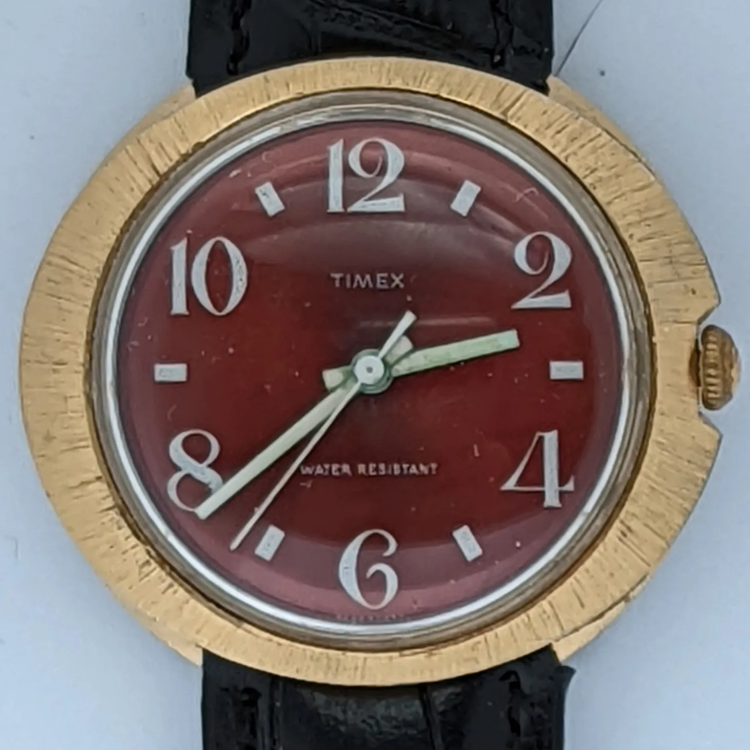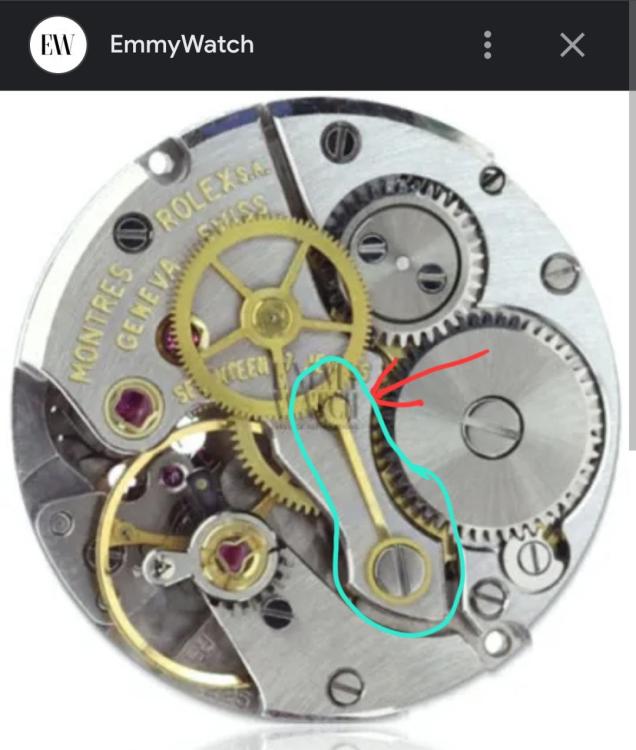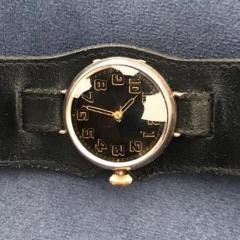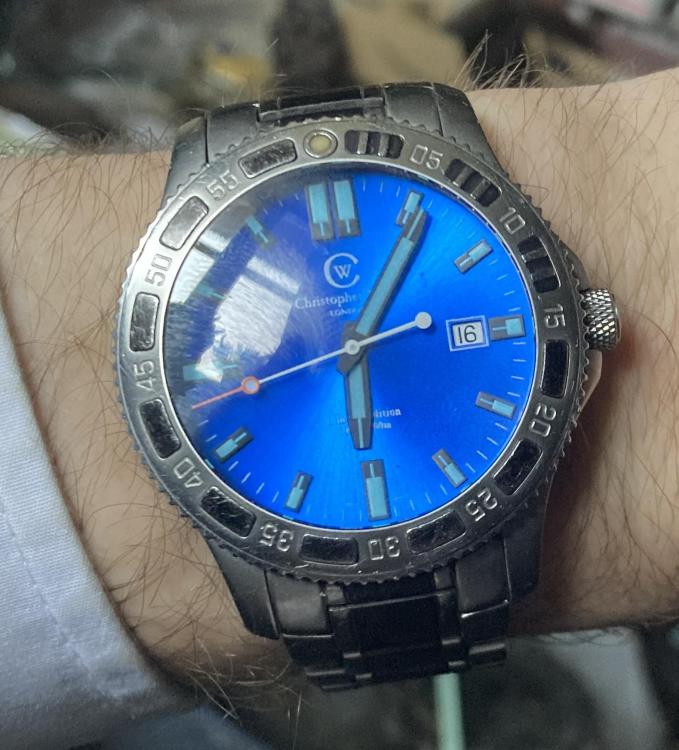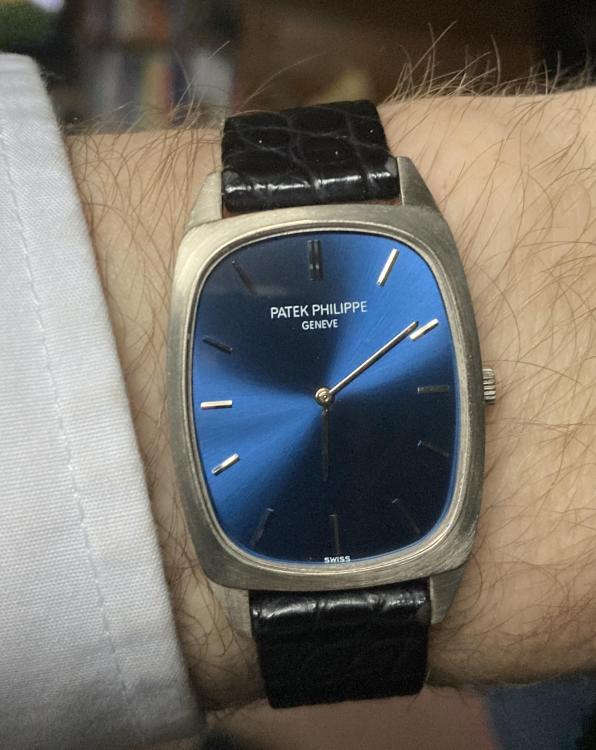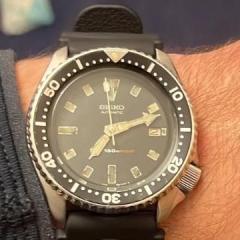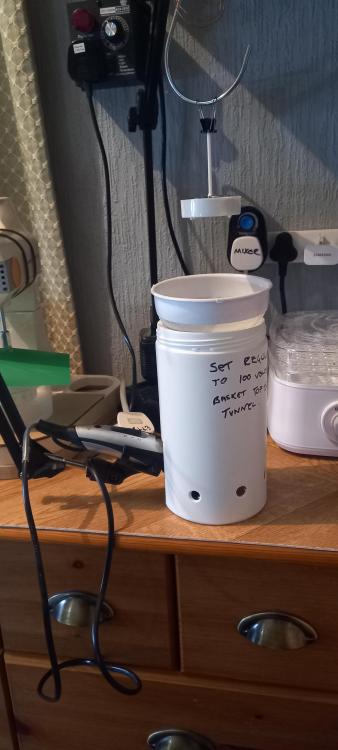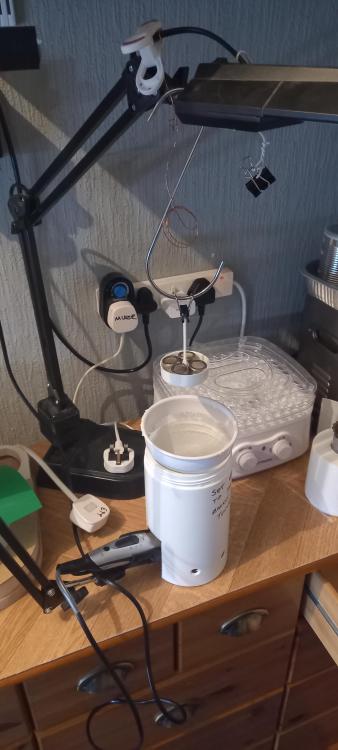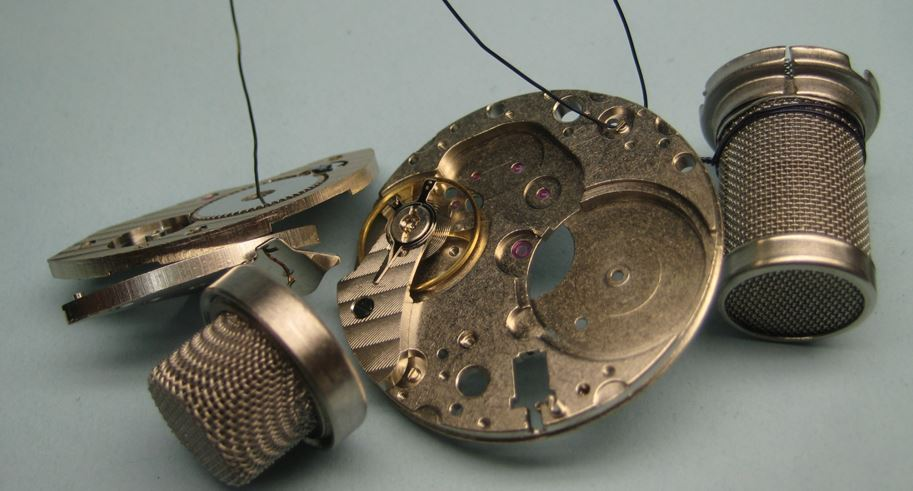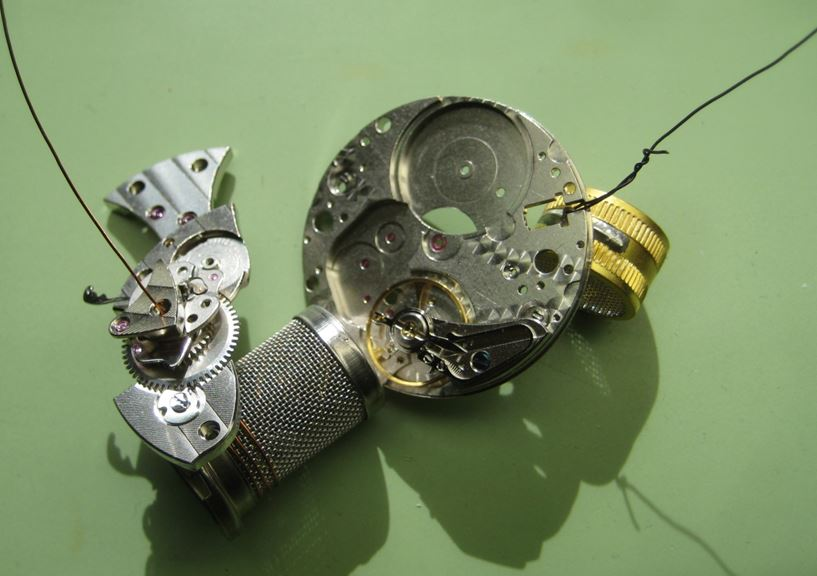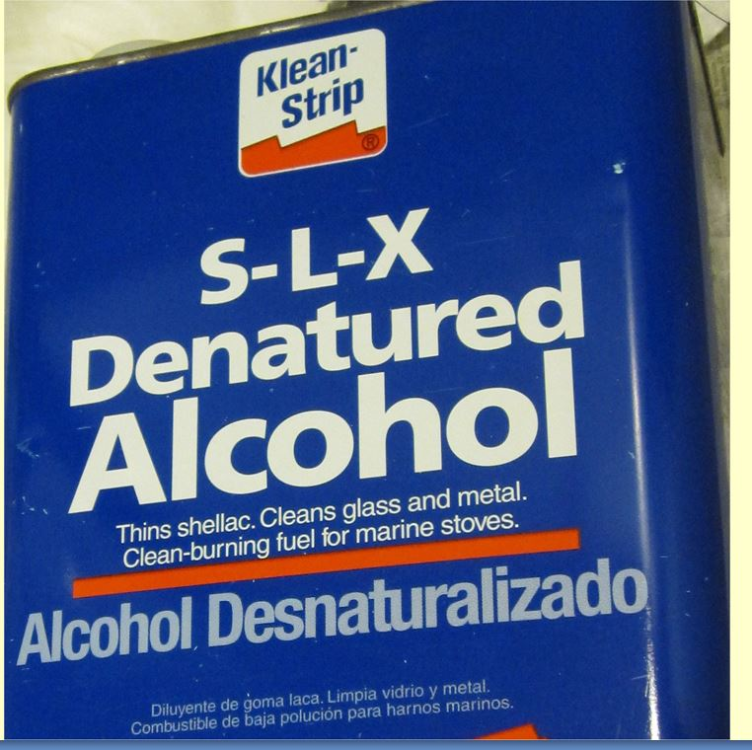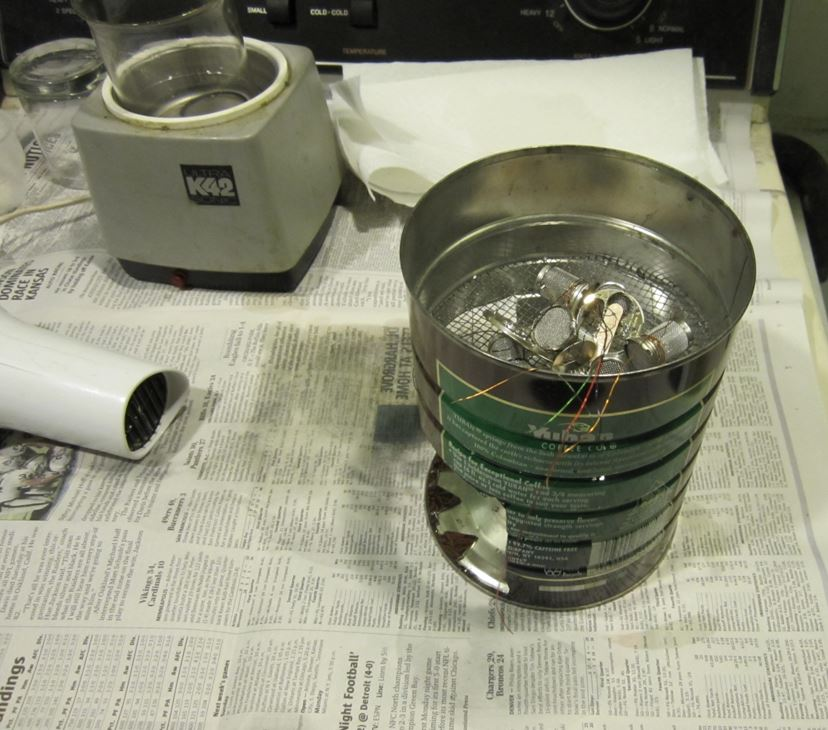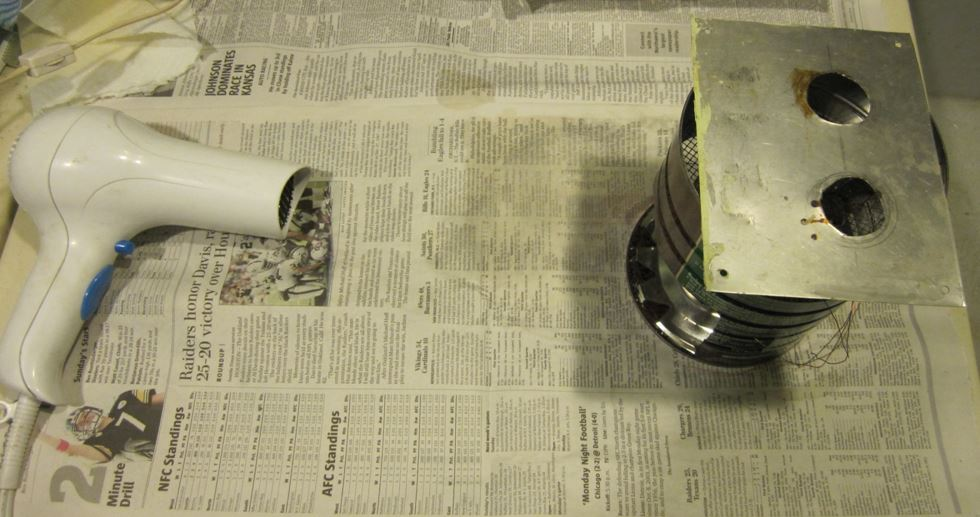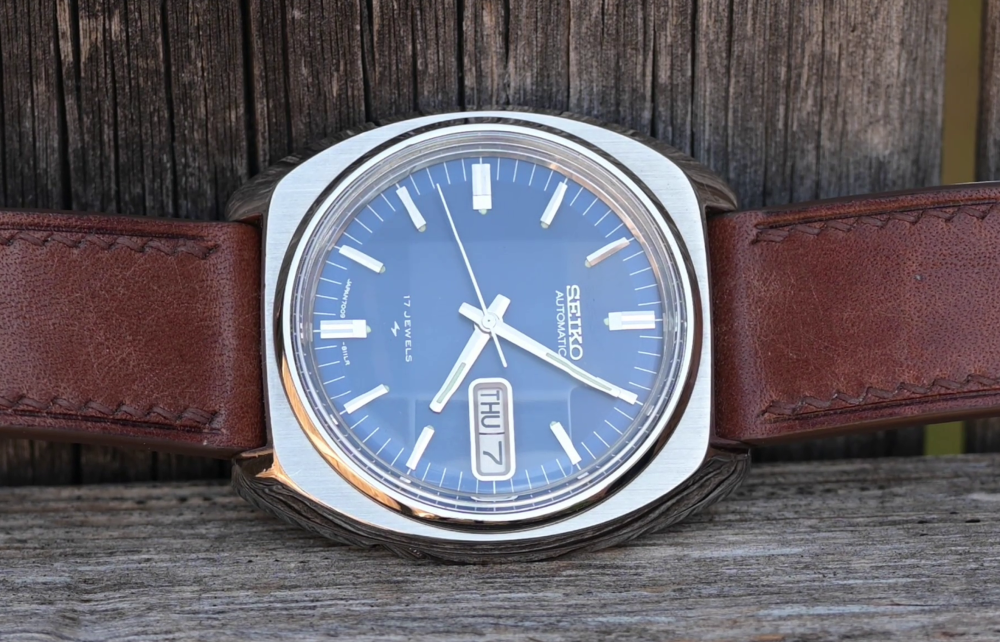Leaderboard
Popular Content
Showing content with the highest reputation on 07/18/24 in Posts
-
In my completely worthless internet opinion, I consider crystals one of those parts that need to be replaced like gaskets or mainsprings. Unless the scratches have sentimental meaning (like "this is the scratch from the hospital the day my first child was born" or "this is the scratch I got pushing the busload of nuns and puppies off the railroad crossing") I see no reason to keep what is essentially a damaged part. If originality (not authenticity) is the goal, then sure, you could keep it looking like crap or spend hours sanding/grinding/polishing the scratches out but why?4 points
-
It's not an antique so replacing it will not do any harm to the value. Just keep the old one.2 points
-
2 points
-
Depends on the watch. Like cars. Some cars, matching numbers matters. Others, it doesn't. If you've got a COPO Camaro, those matching numbers are a BIG DEAL. You had to really know what you were doing to order the car that way, it was truly special, and if cared for would still be around. Anyone can pull a big block from a junkyard pickup and throw it in a basket case. Those numbers are the difference between some dude's weekend project and six figures. If you've got an air cooled VW or rotary Mazda for instance, rebuilds are just part of ownership. Nature of the beast. Matching numbers would suggest something fishy. If I come across an RX-7 or split bus with "matching numbers", I'm pretty sure the seller either doesn't have a clue or is lying, unless they can provide incontrovertible evidence. If it's a Patek or something that's supposed to be kept in a drawer and never worn save for weddings and funerals (why bother? trade it in for a split bus or an RX-7!), then it's probably worth keeping the crystal original. I think Rolex laser etches their logo on crystals these days (not sure when that started), and you'd probably at least want one that's similarly etched. Unless that etching includes the serial number, in which case at least keep the original in the box in the closet. I think your garden variety Seiko gets worn, and is intended to be worn. Replacing a crystal is like running the bracelet through the US. It's just part of maintenance. The crystals aren't special. Service the movement, replace the crystal. Polish the case if you feel like it. Or don't. It's your watch.2 points
-
I'm with @eccentric59on this one, crystals should be replaced or polished. Again just my opinion and others differ.2 points
-
Well it's kept ticking fine - since I wasn't happy with the lume on the hands and I was suspicious it caused that stoppage I decided to bite the bullet and relume... went a bit thinner on the mix and spread on lighter with the correct (ish - used an oiler) tool. Happier with the results and hoping that it keeps ticking...2 points
-
https://pocketwatchdatabase.com/profile/Funkloch/collection/view/1271102 points
-
2 points
-
So similar to my first staking set, which was branded 'Dracip', which is some eastern european make. I've still got it. Someone wanted to buy it from me the other day and I couldn't sell, as it has such sentimental value to me, being one of my first serious watchmaker's tools! I don't use it anymore as I have some really good staking tools such as Boley, Favourite, K & D and a couple of esoteric British staking sets which are unusual. I think one has a makers mark of 'Genko'. A bit like tjhe British firm 'Pultra' which were manufactured in Manchester and produced some really accurate watchmaker's lathes.2 points
-
There's loads of these movements and parts out there to be had at bargain prices. Great movements. I especially like the calendar driving wheel mechanism, if you can call it that, as it grabs and snatches the calendar wheel rather than turning it. Such a snappy and quick date change for an inexpensive movement back in its day! I liked how you tried to get the upper index to fit in the recess of the cock. Great thinking! One thing, I made an observation of the hairspring when you removed the balance and hairspring from the cock. There is no end curve on the spring, so it won't work how you expect it to. This is a side issue to the problem yopu are having, but knowing the end curve needs forming and trying in situ to know it is correct is vital before you go forward from here. Also, taking the hairspring off the balance and attaching it to the balnce cock as in the last pic will show you if the hairspring is true because it shpuld be parralell to the cock when the stud is screwed up tight Here's some pics of hairsprings with endcurves formed correctly. The last pic is with the hairspring removed from the balance and placed and screwed in position (very important to do, as the screw locates with the indentation in the stud and positions everything properly). You can see that the collet needs to be exactly over the jewel, otherwise when the index on top of the cock is moved from the extremes of '+' to '-' the curb pin and boot won't touch the hairspring. If it does this will affect timing especially in vertical positions because the hairspring may 'hang' on the curb pin and make an increase in the timing in that vertcal position, all because the hairspring hasn't been centred shown in this last pic. That's where I would start, otherwise you are trying to diagnose and alleviate a problem when there is a potentially galringly big one in front of you because the hairspring is not shaped correctly. This is incidental to the DU and DD problems you are having BTW A good way to check that the collet is or isn't centred over the balance cock jewel is to move the index from right to left, from '+' to '-' to change the timing from fast to slow and if you see and big difference in the beat error. If there is, then that is strongly inferring that the endcurve isn't formed properly and the curbpin and boot are pushing and pulling on the hairspring when the index is in different positions from '-' to '+' If the hairspring is ever badly pushed or pulled by curb pin and boot there will be be loss in amplitude.2 points
-
Here's mine. Officer's watch from the wrong side of WWII. Back is scratched all to hell to get rid of the D#. There are little tangs around the crystal from the tip of a bayonet resulting from a battlefield repair attempting to keep the crystal from falling out (this according to the watchmaker I took it to to have it serviced shortly after I got it). I got it off eBay out of the Ukraine when I was in college nearly 20 years ago for $35. That sourcing location suggests it was possibly traded for cigarettes or something in a POW camp, or picked off a corpse on the eastern front. I had no idea what it was beyond a cool looking hand wound watch. It's negatively water resistant due to the crystal, so I don't wear it anymore. Insane little bit of history to have on ones' wrist.2 points
-
OK so when it settles to a stop that isn't the zero position. If you can, you need to let the spring down fully by hand and then set the dial to zero. Edit You should be able to prove that there's still power left in the spring when it stops by letting it wind down normally till it stops and then see what tension is left in the spring when you let it down by hand (if you can).1 point
-
1 point
-
I haven't had any issue with the fumes , but who knows, reasonable to wonder. I think Jd richard made a tool which held the balance at about a cm high with the cock laying down at the bottom. Sounded proud of it actually. Here is the tool, though might work like you say if metalic, its was made for barrel work. Try it with a broken fork in ultrasonic, no shellac left in a few minutes bath.1 point
-
Is that so? Well, I've only always used benzine for soaking (outside any machines) and professional waterless cleaners in the ultrasonic. With those two approaches, I've never had any problems with the impulse pin. Including watches from the 1930s. But I indeed cannot be sure that lighter fluid in the ultrasonic is safe. So yea, better ignore that part of my advice.1 point
-
Its finding a way to keep the balance wheel up out of the fluid without compromising the hairspring. I did wonder if the solvent fumes might have an effect on the shellac if left too long.1 point
-
Ya, have had this idea for long, like placing a U shaped spring/wire , under the balance wheel and on top of the cock, but never tried it. Like a U spring cut out of common paper clips. Rgds1 point
-
If in ULTRASONIC , lighter fluid can remove shellac.1 point
-
1 point
-
Thanks @JerseyMo Interesting stuff. Maybe its a "Dundee Special" that sneaked out of the Harrison Road factory without visiting the packing department, if you get my meaning. @JerseyMo I looked up the dial code (262642472) online and this is what I found. Source -> https://www.vintagetimexwatches.com/marlin/26267-2472/ Note the difference mine is ...2472 vs the example ...2527 Year: 1972 Reference: 26267 2572 Model: Timex Marlin Movement: m25 Case: Gold plated base metal Complication: Manual wind movement. Calendar (Date) Special Features: UFO style case with sunburst striations. Red dial with large alternating Arabic and rectangular markers Reading up on that site about the dial codes, it should be a 7272 since mine has an M72 movement, not a 2472 which would be an M24 movement. Surely if mine was designed with an M72 movement the 24 should be a 74 i.e. 26267 7272 EDIT: On further reflection, my dial code should be 65267 72721 point
-
Hi Daisy, The diagnosis is most likely correct: there's a spring that puts a tiny bit of tension on the seconds pinion (which holds the seconds hand). If that spring is too loose, badly placed, or even missing, the second hand will skip. A skilled watchmaker should be able to fix this easily. Cheers PS: See picture. This is a Rolex calibre 1225, you may have this or a similar movement in your Oysterdate. The spring is surrounded in green, the red arrow points at seconds pinion.1 point
-
The only way I'd trust a NOS is if it was in a Seiko packet from a place I trusted. As a note now I know what crystal you're talking about you need to be careful with the repos as some are better than other when it comes down to the sidewall thickness and bevel.1 point
-
Lay the cock with balance attached on bottom of a glass Jar, (cock down-balance up). Pour your cleaning solution in the jar until fluid level reaches somewhat below the roller table. Tighten( air tight) the lid of the jar. Fluid won't reach the impulse jewel, but hairspring is fully immersed in cleaning fluid, and can be left to soak as long as you want. Obviously the Jar best be of clear see-through glass, and balance tilts, make sure that impulse jewel sticks out of the fluid. Good luck1 point
-
Seiko isn't etching these crystals. They're just glass circles with some marketing attached. The difference between NOS and new production is zilcho. You're overthinking it. If it were me, and I wanted to keep the original original, I'd just get another glass circle. If it were me and I wanted it to be something I wear without worrying about, I'd get a sapphire aftermarket crystal. Which is what is in my own Seiko.1 point
-
It's very difficult, if not impossible to discern between a used and an original crystal1 point
-
Omega used to etch a little Ω on the inside of the crystal. I'm not sure if they still do that either. But, let's entertain a purely hyperbolic and ridiculous scenario. Everyone knows the Omega Moon watch, but did you know that Neil Armstrong never took his watch out of the lunar landing module? And that it was Buzz Aldrin's watch that was the first to be on wrist on the moon? And, that was disappeared enroute to the Smithsonian and has never been recovered? So let's say I found it at a pawn shop in Newark, NJ right next to Jimmy Hoffa's gold Rolex Datejust. My story goes that Omega provided two Speedmasters -- one for Neil and one for Buzz (for the sake of the story, Mike Collins, the command module pilot, wore a Timex). During testing the crystal got scratched on Buzz's watch and NASA had it replaced with a new one ... possibly from Omega, but as a Govt. agency they probably went with the lowest bidder. So the whole moon thing happens and parades and history and medals and game shows and cereal boxes, etc. Now I've got the first Speedy that landed on the moon and there is a big, golf-ball sized dent in the crystal from Neil Armstrong's lunar tee-off. Should I try and retrieve the original scratched crystal from NASA? Keep the damaged crystal that was actually on the lunar surface? Or should I just get a new crystal so the watch can once again be used as a watch? The watch is more valuable: A.) With all original parts, regardless of condition. B.) In the condition it was in at time of historical achievement? 3.) In optimal working condition regardless of the parts? Now take out all the historical hyperbole and think about it as you just bought a Speedmaster in 1965 for $185 U.S. (yes, that what they sold for in 1965) and change B. to "The condition it was in after you fell in the pool on your honeymoon after too many Pina Coladas." Does it change the answers? Should it change the answers? Are you fond of rhetorical questions? What is the airspeed of a coconut-laden swallow?1 point
-
I have and there's loads of 'NOS' out there, the problem being 99% of them are fake and at this point I don't know how to ID an original... I'll read up though. Yeah I'd definitely keep it, though this is one of my forever watches so barring misfortune it'll be mine while I'm about. I like this post - good perspective thanks.1 point
-
I would replace the crystal personally. You could retain the original crystal just in case a collector offers big money if it is all original. When I have replaced crystal and even original worn marked straps I bag them up to go to the owner with the repaired watch. Tom1 point
-
Problem with polishing is that often these hardlex crystals get chipped on the edges so it might be impossible to get satisfying results. I don't mind an aftermarket crystal but I don't mind a few scratches either. I just bought the same replacement crystal for a different Seiko model. I haven't installed it yet but it seems ok quality. Spencer Klein claims to sell very exact copies of the original, mine was some random from ebay.1 point
-
Difficult to see from the photos but my opinion is that if everything is still legible then leave as is or maybe try and give it a light polish. Also on something like this for me would have to be an original crystal or nothing.1 point
-
Here's a discussion notice they make references to 992B https://mb.nawcc.org/threads/ball-hamilton-999b.16237/1 point
-
The problem with the ball watch company is they did not manufacture their own watches. They have others manufacture the watches and conceivably make changes perhaps? So a contract with companies to make watches they put their numbers on them but the watches are still based on the original companies watch. Because the type of the balance staff this is a Hamilton and it's probably based on the parts of the Hamilton 992B. We would know if we got the staff number if it's a 992B staff or a 950 B staff which I think has some pivots size variations there are some other B series Hamiltons. So basically if we get the staff number we can figure out the balance jewel that goes with it. Then because as I said it's based on the 992B the jewel assembly just pushes out and is replaced as a unit.1 point
-
It is! There is a problem with the bridle tension imho.1 point
-
1 point
-
Fascinating how different we are. I'm not sentimental about most things. If I have only one tool that works, I'll keep it, if I have a better tool, then why not sell it. I'm not saying you are wrong, just a different perspective.1 point
-
If you posted this and said "I've found this staking tool and it costs £1000 and I want to know if it is worth spending my money on." It would be very different from "I've found this staking tool and it only costs £10, do you think it's worth buying?" To give you any informed answer, you have to first provide some important information to base our answers on, like the price of it! To be honest, you are going to find a good Favourite or other known brand of staking tools and all or most of the anvils and stakes for about £150 to £250. If this is under £50 I would probably buy it and find the other bits and pieces needed, but that can be a pain in the ass, so it's back to buying a complete set. It depends what kind of person you are. I Ilke to buy something and find other pieces to go with it, especially when it comes to watchmaker's lathes and all the attachments and countershafts, chucks, etc. But some like to have it all now. I suppose it boils down to 'delayed gratification.' Having a psychotherapist as a wife has its upsides!1 point
-
1 point
-
My two blue-dialled examples, which don't appear to be duplicates of anything already posted on this thread. Both have mechanical movements, the first being my 'take it anywhere, do anything' watch which has been up mountains and diving (once). It is properly waterproof and the sapphire crystal is resistant to pretty much anything, although the bracelet is showing signs of wear after 17yrs of hard use. The other is a bit different. Alec1 point
-
Now given its location at the end of the train of wheels, train wreck is a lovely description of the mess I got myself into. Alas no, I put all the other parts back together then set it aside in the I should have known better pile until I can find myself a reasonably priced replacement balance cock, and hopefully good balance wheel attached before I repeat this whole debacle! next mission an old alarm watch that only runs while you shake it, what could possibly go wrong?!1 point
-
I doubt a regulator can pinch a hairspring that tightly. Anyway, the hairspring would've been destroyed when you moved either of them. You can verify this by opening up the regulator boot and try moving the stud carrier and regulator independently. I'm sure they're stuck. It's a common problem. Sometimes you have to disassemble the regulator assembly to clean and oil it lightly.1 point
-
1 point
-
1 point
-
yes I was being serious but? yes always one of the amusements in the universe when people aren't exactly on the same page and answers don't make sense. Usually much better when you're dealing with a person right in front a you you can see immediately that something isn't quite right. I think a better way to do this is I will just show you what I used to use at home. It worked fine for many many years then I had a time span where I wasn't doing any work at home and the plastic containers last time I looked had disintegrated. Even though those were rated for chemicals and as I said lasted for many years they didn't last forever so glass might've been better so you can't see the cleaning location as the newspaper hides it. So the cleaning location is the room for normally washing clothes the newspapers on top of the washing machine. I was just like the idea of a newspaper keeps things from falling where they shouldn't be and it's easy to throw away when I'm all through. two types of baskets purchased off of eBay. The larger one is supposed to go in some other machine typically it's supposed to be up right because the lid doesn't fit super tight and really tiny parts could escape. Which is why everything super tiny goes in the basket with the screw on lid. Then a fine wire attaches to each of the basket so I can pick them up at all the larger parts are strong on the wire in this image the balance jewels have been removed the balance wheel is back in as it will clean just fine and everything's protected. Otherwise the balance wheel has to go out and either be strong on a wire or a large enough basket but typically it would've been strong on the wire. different image showing how to do things then cleaning machine people frown on what's being shown here. Although thinking about it on YouTube they frown on ultrasonic and probably just about everything in the universe. Classically with ultrasonic machines you never want to place anything directly over the transducer like a beaker for instance but this is the way the machine was sold local drugstore had them on sale a very long time ago I think this thing must've lasted almost 20 years before it disintegrated. Cleaning fluid goes in the beaker parts in the beaker in the machine with water around its yes is a lot of taking the parts out I usually put them on a paper towel to spin dry oh wait there is no spinning there but I put on paper towel the drip off while changing the fluids in the beaker it would actually better if you had separate jars 80 1F be swapping the fluids around but it didn't work then at some point in time they changed the rinse where basically it will not draw no matter how hot it got it would not 100% dry. I asked a friend what he was doing and he recommended alcohol. Isopropyl would be better but this is what I used and yes it does dissolves shellac. But it was only in there for a few seconds the purpose was to rinse off the rinse and goes immediately and in dryer and it was never an issue. yes today it probably use isopropyl alcohol but what's the fun in that? Then after a very long time very very long time the little ultrasonic like they typically do decided no longer to function. Fortunately somebody had given me this and you will note there's a piece of plastic to keep the beaker off the bottom of the tank. Then there is water in the whole tank enough that things function correctly but not so much that the beaker is in danger of floating away. Yes various YouTube people would really frown on this procedure but I don't recall any problems at all in originally freeze-drying the hand-held hairdryer that I would just put on the newspaper and put the baskets in front didn't blow super intently and it worked perfect. But it finally disintegrated so I think I purchased this and not sure where it came from but the new one gets much hotter and blows much more intently so usually what I do is I would keep the spacing between it and the baskets much farther away. But then I got creative and made which you see in the image. then I got even more creative and found a piece of scrap metal as I wasn't sure what the actual error pattern was I probably should conducted smoke and windtunnel tests the see the pattern of the air flow so I put a piece of sheet metal on top. Also still had a hair dryer back a distance because I did feel that it was very very hot I really can't see how anyone could dry their hair was something like that it seems like you'd get burnt but maybe that's why got it cheap someplace? so there is how I used to clean watches at home. Now if I needed to clean a watch a just go to work and use an astronomically expensive machine that does a really nice job. But even without the astronomically expensive machine DIY works quite well.1 point
-
1 point
-
Ross bloody brilliant matey you should be well proud of that one especially after the suggestion that it could not be fixed. The smile on the old boy's face must have been priceless and now he can pass that down to his family. I love stories like this, you've just brought a tear to my eyes. My reputation as a tough guy is now diminished, good job I'm on my own1 point






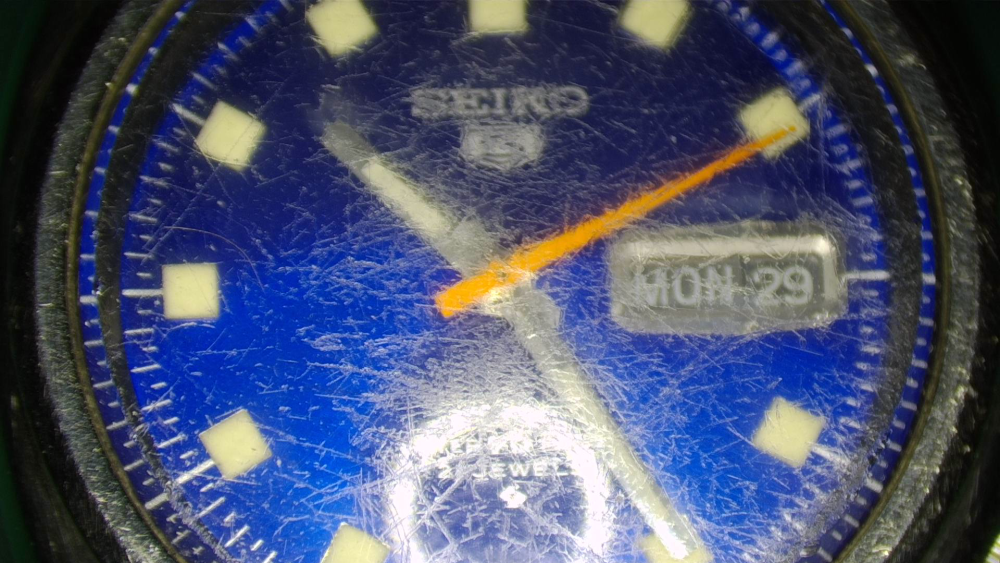
.thumb.jpg.19a9c4ff164d78d516aa9f05a063752b.jpg)
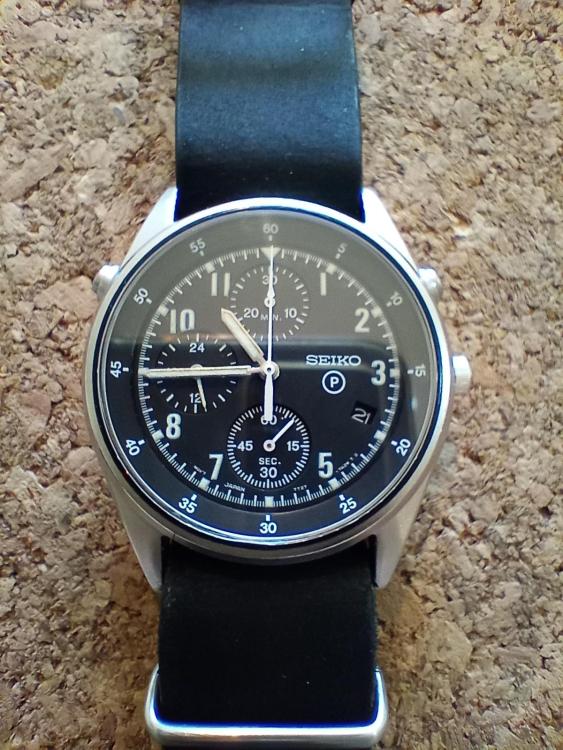
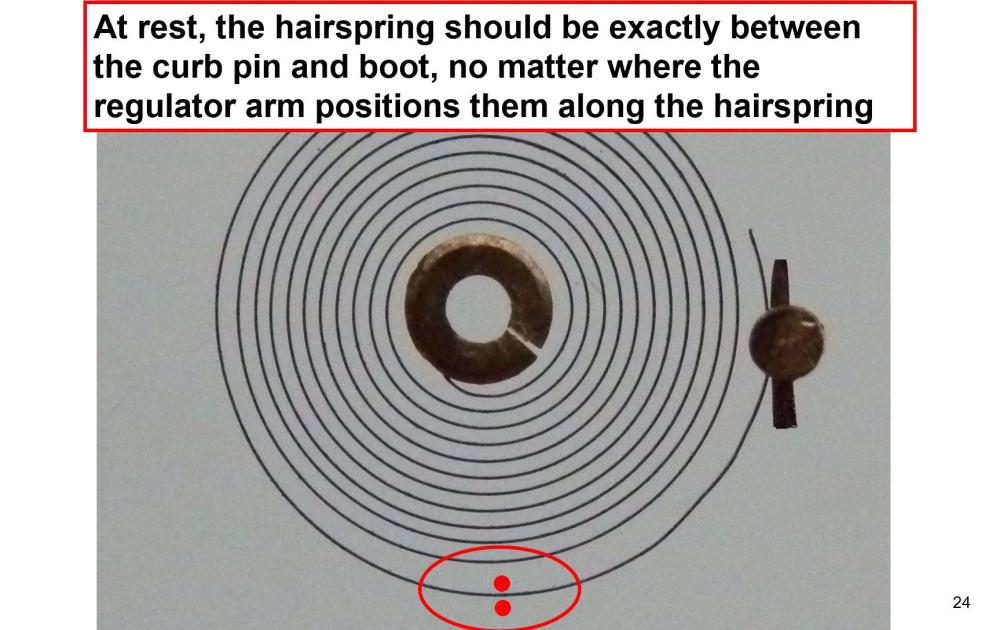
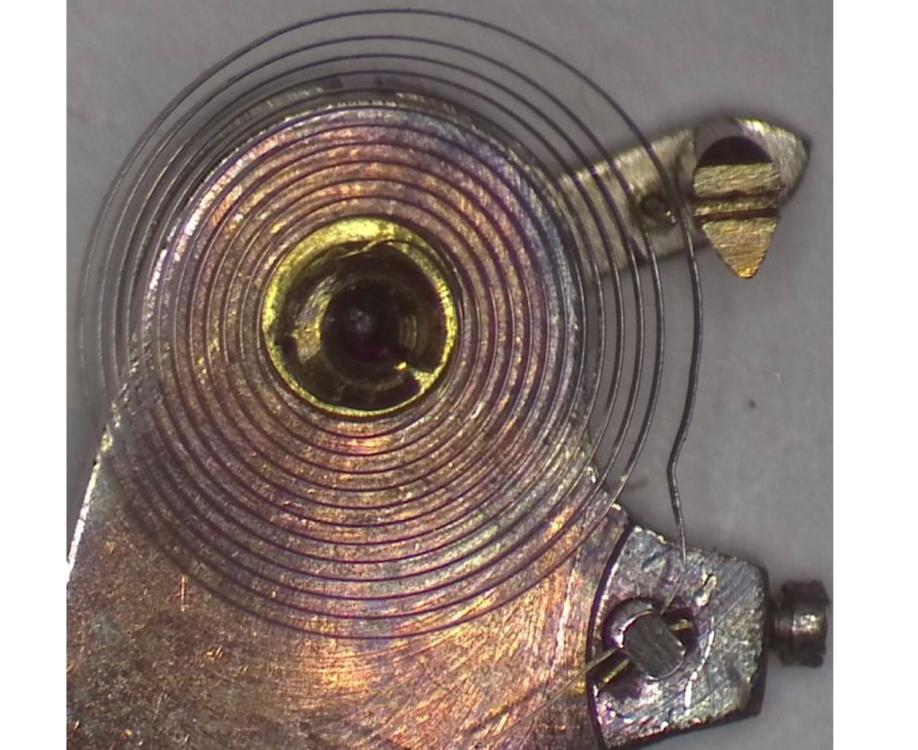



.thumb.jpg.cb17a66989f1e796fd4217db2e9ca9df.jpg)


